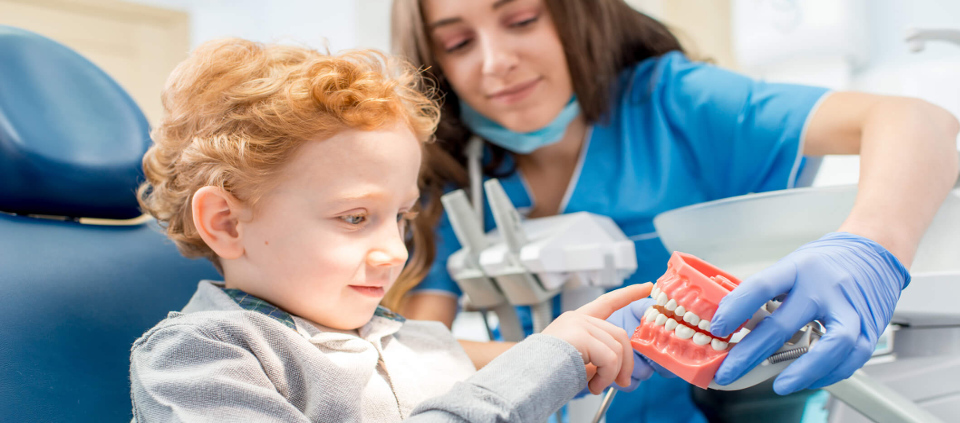Premier Children Dentist for Comprehensive Dental Providers
Pediatric Dental Emergencies: What Moms And Dads Need to Know for Quick and Effective Therapy
In the world of pediatric healthcare, dental emergency situations can occur all of a sudden, leaving parents not sure of how to take care of the circumstance efficiently. Recognizing the signs, types of injuries, and immediate actions to take can make a considerable distinction in the outcome for a youngster's dental health. With a fast and ideal feedback, parents can reduce possible long-term consequences and ensure their youngster receives the necessary treatment without delay. By being prepared and informed, parents can play a critical duty in protecting their child's dental health.
Indicators of Pediatric Dental Emergencies
When evaluating pediatric oral emergency situations, it is important for moms and dads to be vigilant for details signs showing prospective serious concerns. One of the key indications of an oral emergency in children is relentless tooth pain that is not alleviated by non-prescription pain medications.

Usual Kinds Of Oral Injuries
Usual types of dental injuries in youngsters often result from mishaps or sports-related tasks that can lead to various forms of injury to the mouth and teeth. One usual dental injury is a fractured tooth, which can range from a small chip to an extra severe break involving the internal layers of the tooth. Youngsters might also experience dental injuries like tooth invasion, where the tooth is pressed right into the jawbone, or avulsion, which is the full displacement of a tooth from its socket.
Immediate First Help Procedures
Upon running into a pediatric oral emergency, swift and appropriate initial help steps are crucial to alleviate discomfort and stop further complications. For a knocked-out tooth, advise the kid to gently wash the tooth with water, trying not to touch the origin, and location it back in the socket if feasible. If re-implantation is not possible, store the tooth in a container of milk or the youngster's saliva until getting to the dental expert.
When to Seek Specialist Assistance
Looking for timely dental treatment from a pediatric specialist is vital in dealing with possible problems arising from pediatric oral emergencies. Moms and dads should look for expert aid promptly if their child experiences extreme tooth pain, face swelling, bleeding that doesn't quit, a knocked-out long-term tooth, or any kind of trauma to the mouth or face. These indications indicate a severe oral problem that calls for immediate focus from a pediatric dental expert.
Additionally, if a kid grumbles of persistent tooth sensitivity to hot or cool, difficulty chewing or swallowing, or signs of infection such as pus around the periodontals, parents find more info should not delay in seeking expert dental care. These signs could suggest underlying oral issues that need to be resolved without delay to avoid more problems.
In cases of dental emergencies, it is essential for parents to contact a pediatric dental professional as soon as possible to ensure correct medical diagnosis and therapy - kid dentist oakland. Postponing expert help can lead to exacerbated oral concerns and extended discomfort for the youngster

Protecting Against Future Dental Emergency Situations
To decrease the chance of future dental emergencies, parents need to prioritize constant dental hygiene methods and regular visits to a pediatric dental professional for preventive care. Encouraging kids to comb their teeth twice a day with fluoride tooth paste and teaching them the appropriate method for 2 minutes each time can substantially teeth problems decrease the dental implant cost risk of dental problems. Flossing day-to-day is also important to get rid of plaque and food fragments between teeth, where a toothbrush can not reach. Furthermore, restricting sweet treats and beverages can help avoid tooth decay and tooth cavities.
Regular brows through to a pediatric dental practitioner for examinations and cleanings are important for very early detection of any possible dental troubles. These visits allow the dental practitioner to keep an eye on the child's dental health, give expert cleansings to eliminate plaque and tartar buildup, use fluoride therapies for added defense, and offer advice on appropriate dental care strategies.
Conclusion
To conclude, parents need to be conscious of the signs of pediatric oral emergency situations, typical kinds of dental injuries, prompt initial help measures, and when to look for specialist help. By taking aggressive actions to stop future oral emergencies, parents can make sure quick and effective therapy for their youngsters. It is essential to remain educated and prepared in order to handle any type of oral emergency situation that may arise.